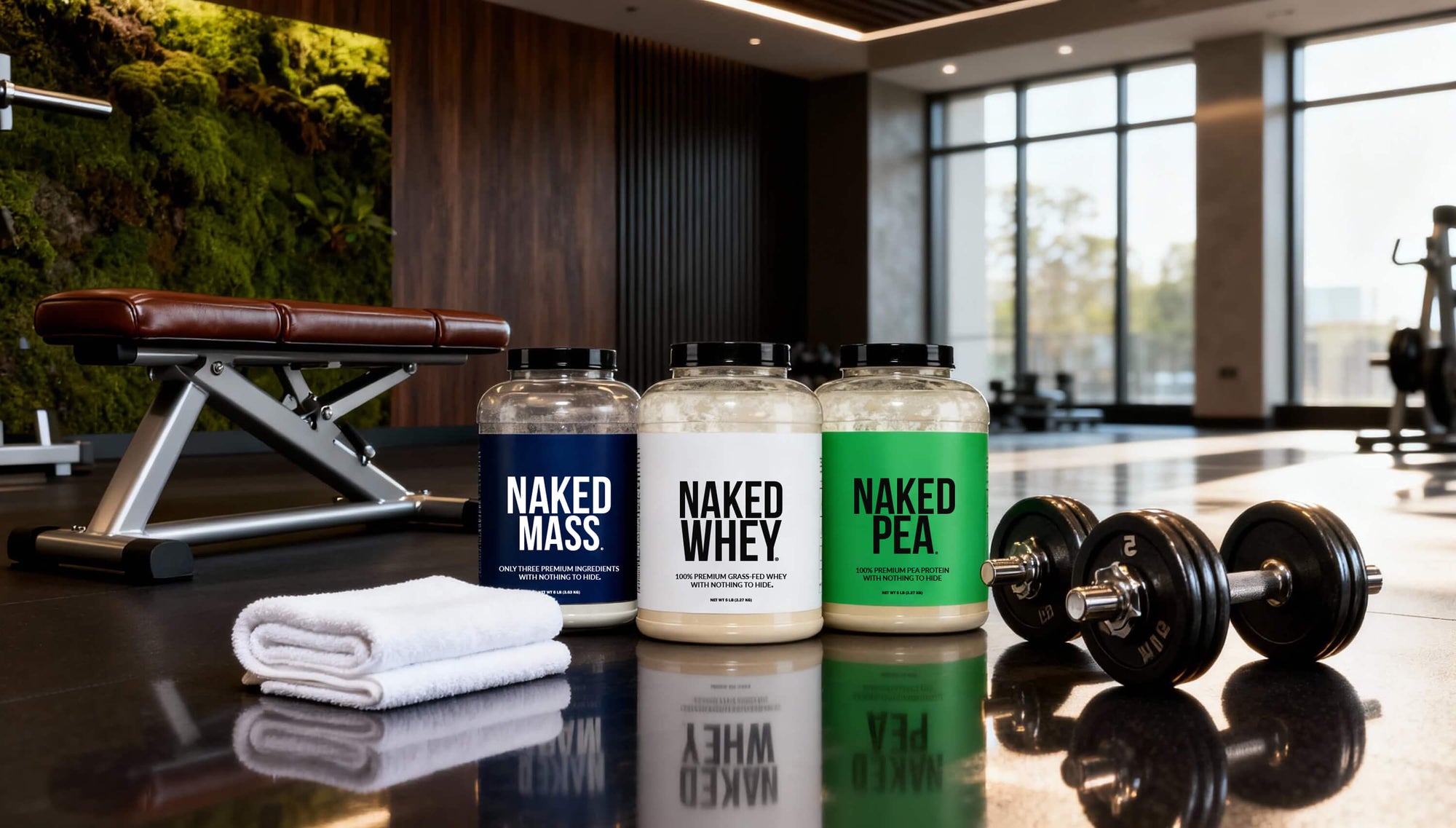If you’ve ever wanted to lose weight but still look defined in a swimsuit, it’s time to ditch traditional diets and focus on body recomposition instead.
Body recomposition is when you lose fat mass but retain or even gain muscle mass. While this might result in some weight loss, that isn’t the main goal. Instead, you will lose inches and gain muscle definition, i.e., you’ll look fantastic in a bathing suit.
In fact, body recomposition is more sustainable than traditional weight loss and can even be a healthier option.
There are different ways to achieve body recomposition, with intermittent fasting (IF) quickly becoming one of the more popular methods.
IF is best known for its role in weight loss, glycemic management, and even heart health, but it may also aid in fat loss without sacrificing muscle.
This article will cover the science of IF for body recomposition, practical strategies, potential pitfalls, and everything else you need to know.
The Science Behind Body Recomposition

Losing fat while maintaining or gaining muscle mass may sound complicated, but it’s actually pretty simple. Let’s look at the science.
To lose fat, you need to eat in a calorie deficit, meaning you are burning more than you are taking in. However, to prevent losing muscle, you need to focus on a protein-rich diet with regular resistance training.
This combination works well since protein is extremely satiating, making a calorie deficit easier to achieve.
IF, when done correctly, also pairs well with creating a calorie deficit, making it an easier way for many to achieve body recomposition without the tedious food tracking.
A study comparing the differences between those doing IF with resistance training and those who just did resistance training found that an 8-hour eating and 16-hour fasting window resulted in decreased fat mass and weight in the IF with resistance training group when compared to just resistance training.
Another systematic review of human studies on IF when combined with resistance training found that lean mass is typically maintained in those who do IF when combined with resistance training. However, whether or not you gain muscle is contingent upon your calorie and protein intake.
This review also noted that IF and resistance training may lead to a reduction in body fat, whether in a calorie deficit or surplus, showcasing the benefits it can have outside of weight loss.
As you can see, the combination of IF and resistance training is key, but so is being consistent and patient. Skip the traditional scales, as you may not see a lot of change here during the process.
Muscle is more dense than fat, so even when you are losing fat and gaining muscle, the scale may remain the same. Instead, do body measurements weekly or monthly. This allows you to see the inches lost from fat and the inches gained from muscle tone.
How Intermittent Fasting Supports Recomposition

If you are new to IF, you may be wondering how it works. IF is when you alternate between periods of eating and fasting. For example, a 16:8 IF schedule is when you have a 16-hour fasting window and an 8-hour eating window. This may mean you only eat between the hours of 8 am and 4 pm.
There are many different ways to do IF; some include longer fasting windows, such as 18:6 or 20:4, and some are smaller, such as 14:10.
IF can be a helpful strategy for weight loss as the restrictions on eating windows often lead to a natural decrease in caloric intake.
Fasting periods can also provide additional benefits to aid in weight loss and health, including improving insulin sensitivity and enhancing fat mobilization by shifting your body’s primary fuel source from carbohydrates to fats.
Despite these pros of IF, it’s important for those looking to achieve body recomposition to consistently prioritize protein and resistance training for adequate muscle preservation while in a caloric deficit.
If these are not prioritized, you can see muscle losses during this time, which will reduce the health benefits associated and lead to less desirable results.
As a Registered Dietitian Nutritionist, I encourage my clients to utilize a more liberalized IF window that works with their schedule and preferences to ensure they are successful and able to sustain. For example, if I have a client who wakes at 4 am to get to the gym every morning, I might suggest they include an IF schedule that allows their first meal to begin around 5-6 am to ensure they can get adequate post-exercise nutrition to support muscle growth and recovery.
Practical Guidelines for Success

If you are considering IF for body recomposition, there are a few things to consider before getting started to ensure your success.
-
Choose the right IF protocol
First and foremost, ensure you choose the right IF protocol for you. If you are a novice, start with a shorter fasting window, such as 16:8. Those who have experience with IF may choose longer fasts as their body is more acclimated to this.
-
Prioritize protein
Next, make sure you are prioritizing your protein intake. To build lean body mass, you must be consuming somewhere between 1.6-2.2 grams of protein per kilogram of body weight per day. This takes some time to get used to, especially if you are shortening your eating window.
This may mean more than just eating protein at every meal. It may mean more frequent snacks with protein-rich foods, protein supplements, and the potential need to track to ensure you are hitting these goals.
-
Focus on strength training
Lastly, keep your focus on strength training. Be consistent and utilize compound movements and progressive overload to help support muscle growth. Lifting here and there without a plan won’t get you there.
If you are new to strength training, get support from a personal trainer or fitness expert before diving in. Remember, the research doesn’t support strong results without a strong strength training regimen.

Be careful to avoid common pitfalls of IF, such as:
-
Under-eating - IF helps to create a calorie deficit, but if your eating window is too small, you may not be able to eat enough to support body recomposition. Your muscles need extra protein and enough calories to grow.
-
Overdoing it on the cardio - Cardio can be great for burning extra calories, but excessive cardio can hinder your ability to gain muscle, especially if you aren't eating enough to compensate for the high rate of calories burned during high-intensity cardiovascular exercise.
-
Poor recovery - Consistent strength training is important, but don’t forget about recovery. Not allowing yourself enough time to recover between heavy workout days can result in muscle damage and breakdown instead of gains. Give at least 24-48 hours' rest between working muscle groups.
Potential Risks & Who Should Avoid IF
While there is supportive research on IF for body recomposition, it is not suitable for everyone. There are potential health risks for certain populations, particularly those with a history of eating disorders, diabetes, children, or women who are pregnant or nursing.
Additionally, some may experience negative side effects from IF, such as constipation, lightheadedness, fatigue, low blood sugar, and even mood swings.
Before making any major changes in your diet, be sure to consult your healthcare provider.
Realistic Results & What to Expect

It’s important to understand what to expect with body recomposition before jumping in. Body recomposition is not a fad, and it’s certainly not a quick fix.
Before you start, know that recomposition is slow but sustainable, so adjust accordingly.
Use other tools to track your progress outside the scale, such as progress photos, body measurements, and strength gains.
And remember, consistency over perfection. It’s better to show up, even on rough days, than to give up if you can’t give it your all.
Bottom Line
IF is just one strategy that can be used for recomposition. It’s relatively simple, adjustable, and makes it easy for most to create a calorie deficit that works for them. However, IF is not for everyone.
If you are considering IF for body recomposition, make sure you also have a strength training plan to ensure you get the results you are looking for.
Start gradually, track your progress, and stay consistent. You’ll get there.
You are not alone in your journey, and it helps to have extra support from those around you. Friends, family, and individuals with similar goals help motivate and encourage you to keep going.
If you are on a body recomposition journey, share your experience with us. Comment or sign up for an IF + strength training plan newsletter to hear more tips and tricks to help you hit those goals.
Also Read:
Body Recomposition Workout Plan













